Are you looking for new ways to unlock creativity in your classroom? Look no further. We understand the importance of engaging all students in exciting and creative learning experiences, especially those with special needs.
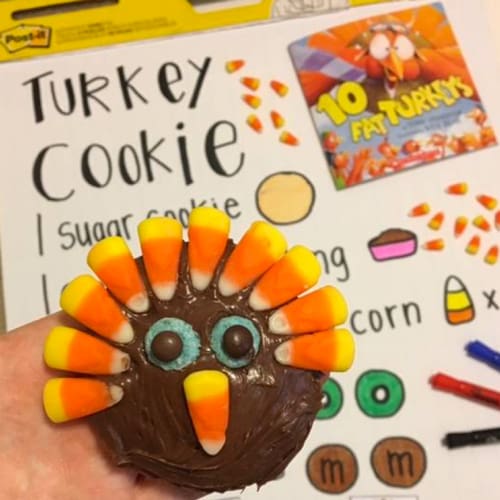
From simple and delicious snacks to more complex meals, visual recipes can be tailored to suit different skill levels and accommodate various dietary restrictions. With easy-to-follow, step-by-step instructions and vibrant visual aids, recipes will captivate your students’ attention and inspire them to explore the world of culinary arts.
The Importance of Creativity in the Classroom
Creativity is an essential skill that should be nurtured in every classroom. It encourages students to think outside the box, solve problems, and express themselves in unique ways. Creativity plays an even more crucial role in special needs students’ development. By unlocking their creative potential, we give our students the tools to overcome challenges and thrive in their learning journey. Creativity fosters a sense of accomplishment and self-confidence, helping special needs students build a positive self-image and develop resilience.
Understanding the Needs of Special Needs Students
Special needs students may have different learning styles, communication abilities, and sensory sensitivities, so creating a supportive and inclusive environment that caters to their individual requirements is essential. By tailoring our teaching methods to accommodate their needs, we can create a space where all students feel valued and empowered to explore their creativity.
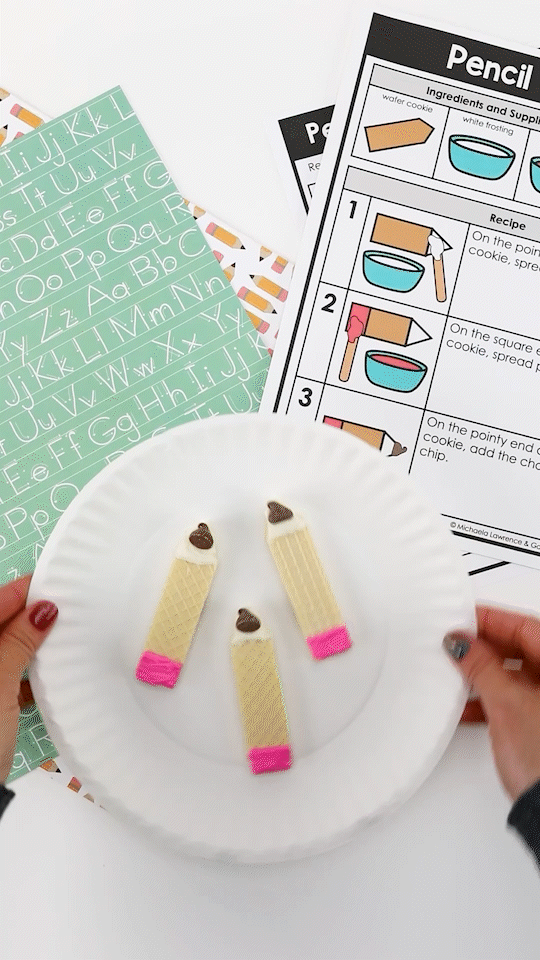
Benefits of Using Visual Recipes in the Classroom
Visual recipes provide a clear, structured format that simplifies the cooking process. By breaking down each step into visual cues, students can easily follow along and understand the sequence of tasks. This promotes independence and builds confidence in their abilities.
Additionally, visual recipes engage multiple senses, making the learning experience more interactive and enjoyable. Combining visuals, text, and hands-on cooking activities stimulates cognitive and motor skills development.
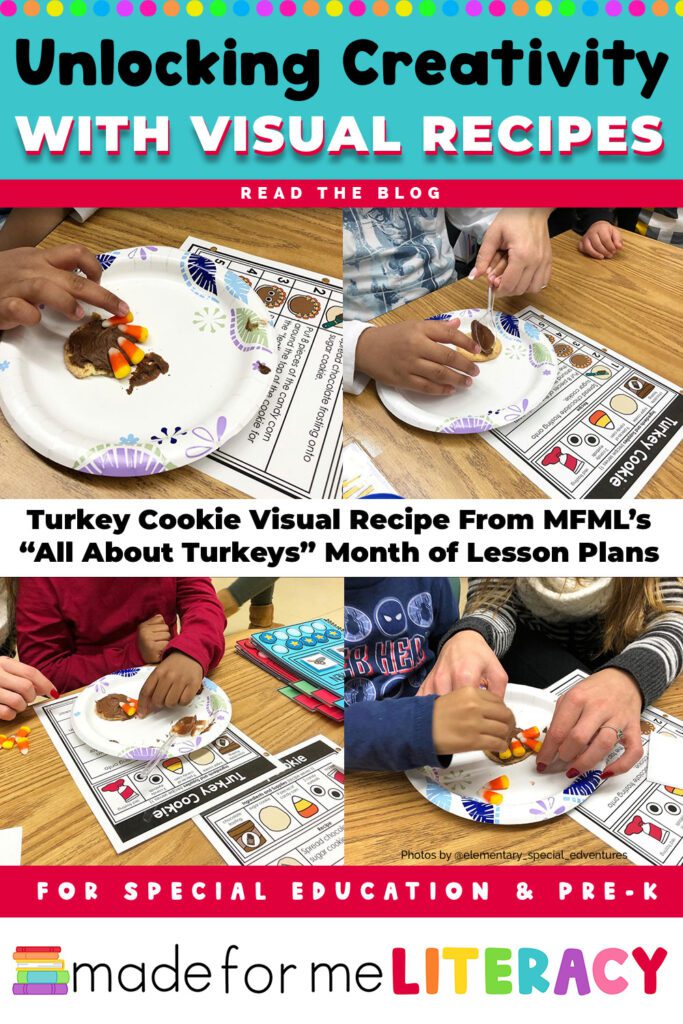
Made For Me Literacy Monthly Lesson Plans Include:
- One fiction and non-fiction Story Time Packs
- Interactive comprehension assessments (printable and electronic files included)
- Low-prep anchor charts
- Easy Art Activities
- Adapted Writing
- Task Boxes (math and ELA concepts)
- File Folders (math and ELA concepts)
- Cut and Paste Worksheets (math and ELA concepts)
- Visual Recipes (one edible and one sensory recipe per month)
- Vocabulary visuals and posters
How Visual Recipes Promote Creativity and Independence
Cooking allows your students to experiment with different flavors, textures, and ingredients, encouraging their imaginations to soar. Students learn to make independent choices by following visual recipes, such as selecting ingredients and adjusting quantities, promoting autonomy and decision-making skills.
Moreover, cooking provides a platform for self-expression, as students can present their dishes in unique and visually appealing ways, showcasing their creativity and individuality.
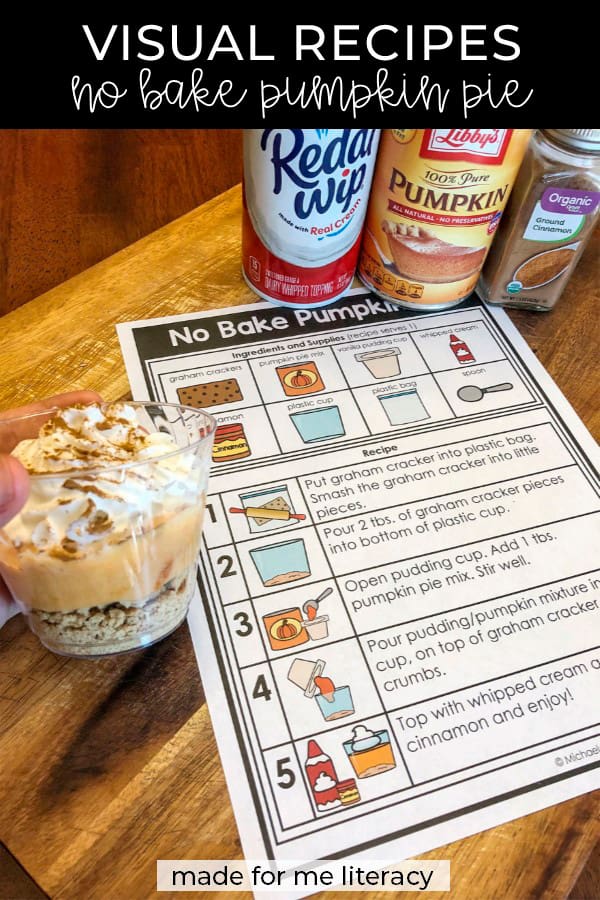
Tips for Implementing Visual Recipes in the Classroom
Here are our top tips for maximizing the benefits of visual recipes in the classroom.
Preparation is key
Before introducing visual recipes, ensure you have all the ingredients, tools, and visual aids ready. This will help create a smooth and efficient experience for your students.
Simplify instructions
Adapt the language and instructions to suit the comprehension level of your students. Use clear and concise language with visual symbols or icons alongside the text to enhance understanding.
Create a visual schedule
Display a visual plan of the cooking process, outlining each step and its corresponding visual aid. This will help students reduce anxiety, anticipate what comes next, and stay organized.
Encourage collaboration
Foster a sense of teamwork and cooperation by assigning different roles to students during the process. This will not only promote social skills but also enhance communication and collaboration.
Celebrate the finished product
Once the cooking is complete, encourage students to present their dishes in a visually appealing way. This can be through plating, garnishing, or even creating a mini-food photography session.
Celebrate their creativity and provide positive feedback on their accomplishments.
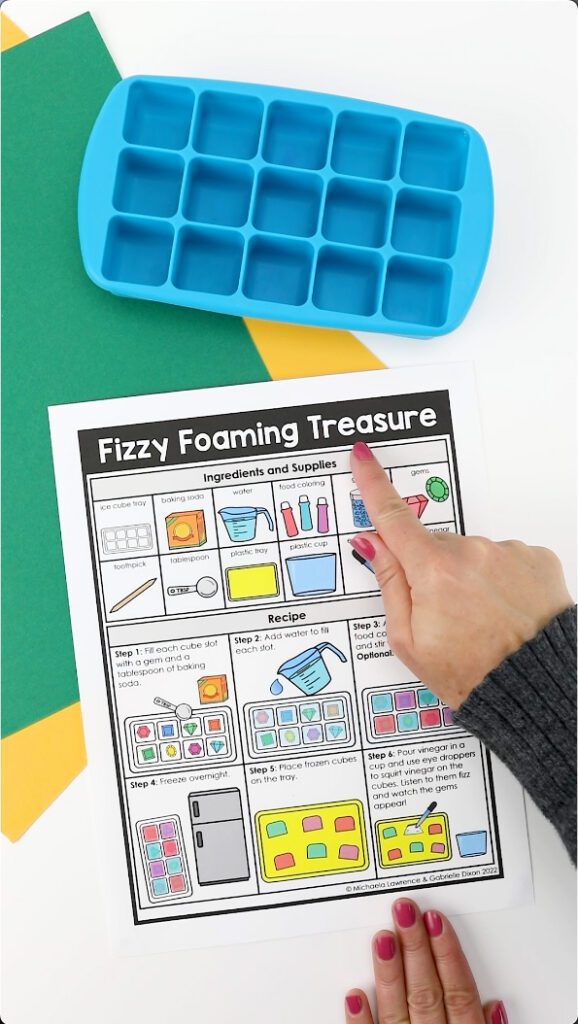
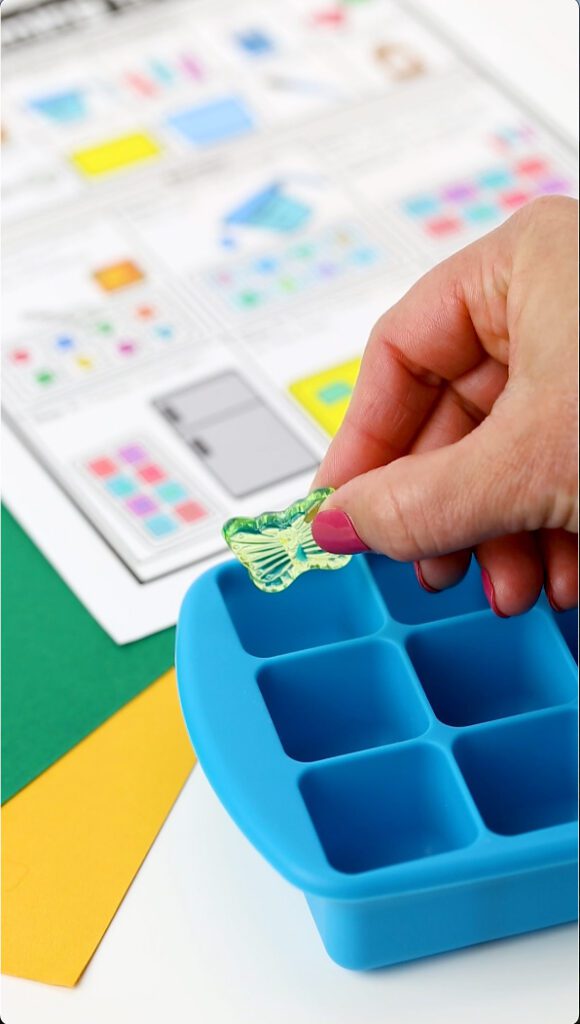
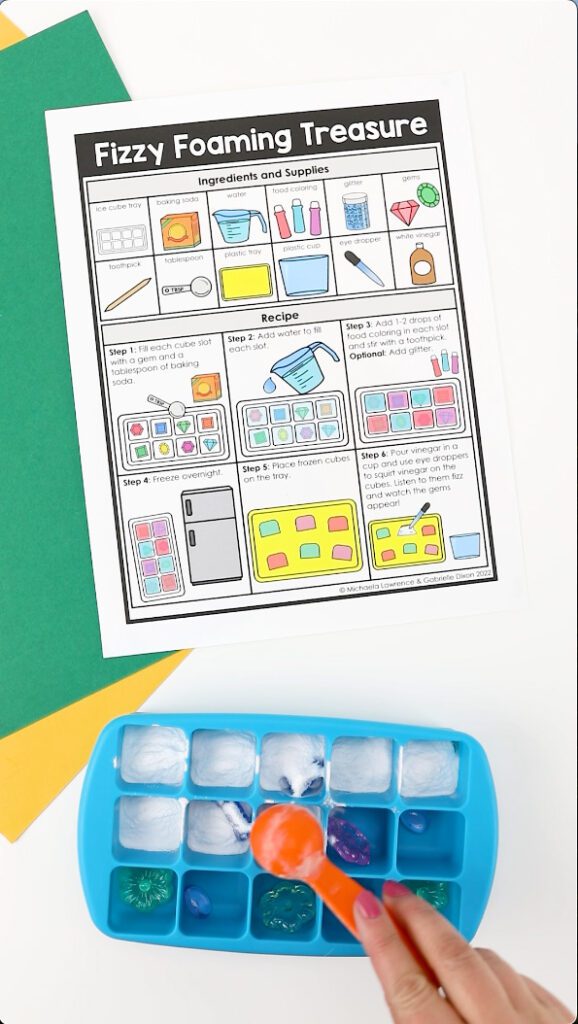
The visual recipe for Fizzy Foaming Treasures is part of Made For Me Literacy: Fairy Tales Unit (Level A) for Pre-k and Special Education
Case Studies: Success Stories of Using Visual Recipes
Implementing visual recipes in the classroom has yielded remarkable results for many educators and their special needs students.
Jenny, a teacher specializing in autism spectrum disorder, incorporated visual recipes into her curriculum and witnessed a significant improvement in her students’ fine motor skills, ability to follow instructions, and overall engagement levels.
The visual recipes provided the necessary structure and support for her students to succeed.
Another success story comes from Mark, who teaches a class of students with Down syndrome. Using visual recipes, he noticed a boost in his students’ self-esteem and independence. They were able to prepare meals at home with their families, showcasing their newfound skills and confidence.
Make Cooking Fun & Accessible in Your Classroom!
Visual recipes offer a unique opportunity to engage special needs students in creative and meaningful learning experiences. By providing a structured and accessible format, visual recipes empower students to explore their culinary skills, express their creativity, and develop essential life skills.
So, don’t wait any longer! Start incorporating visual recipes into your classroom today and witness your special needs students’ remarkable growth and achievements.
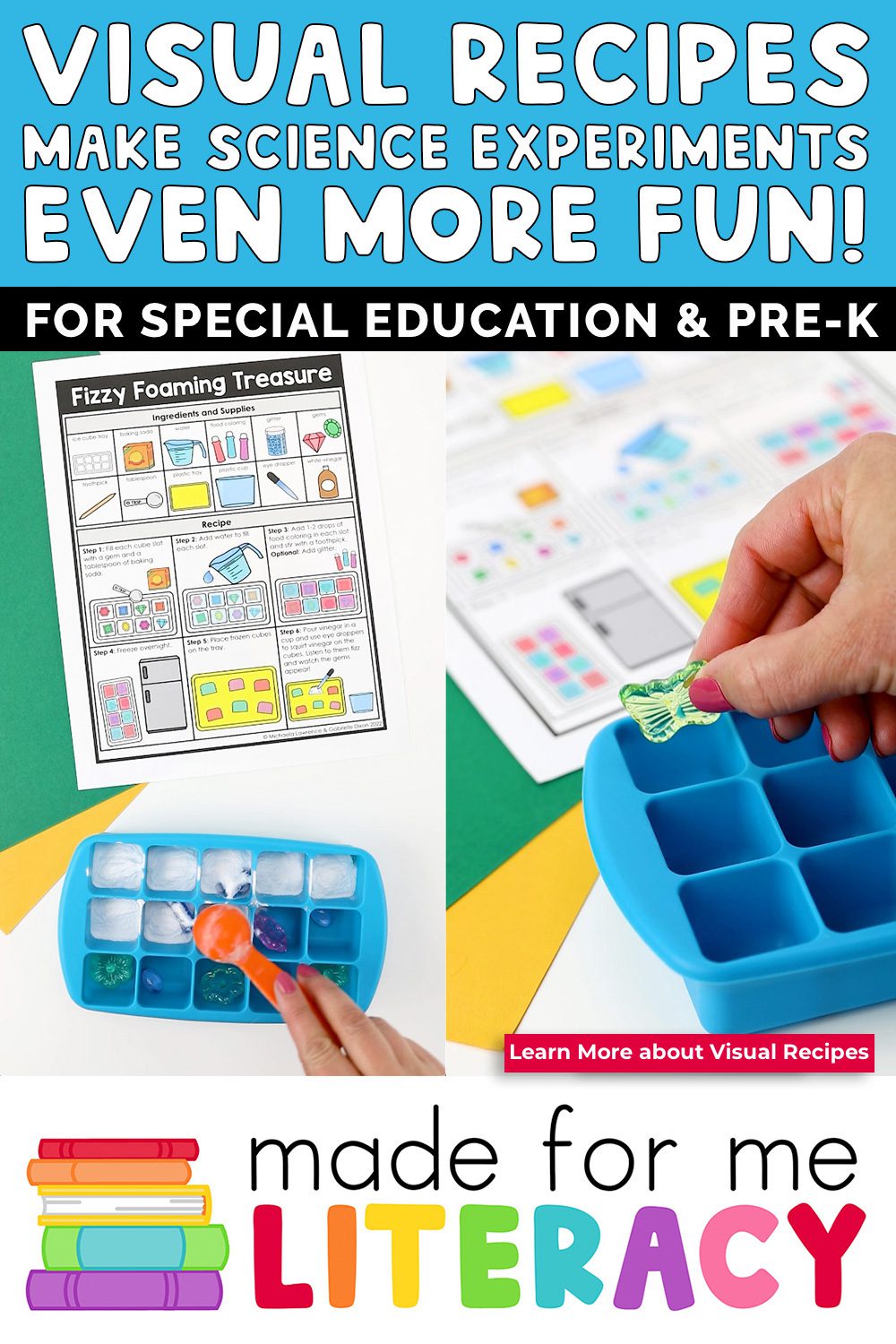
Leave a Reply